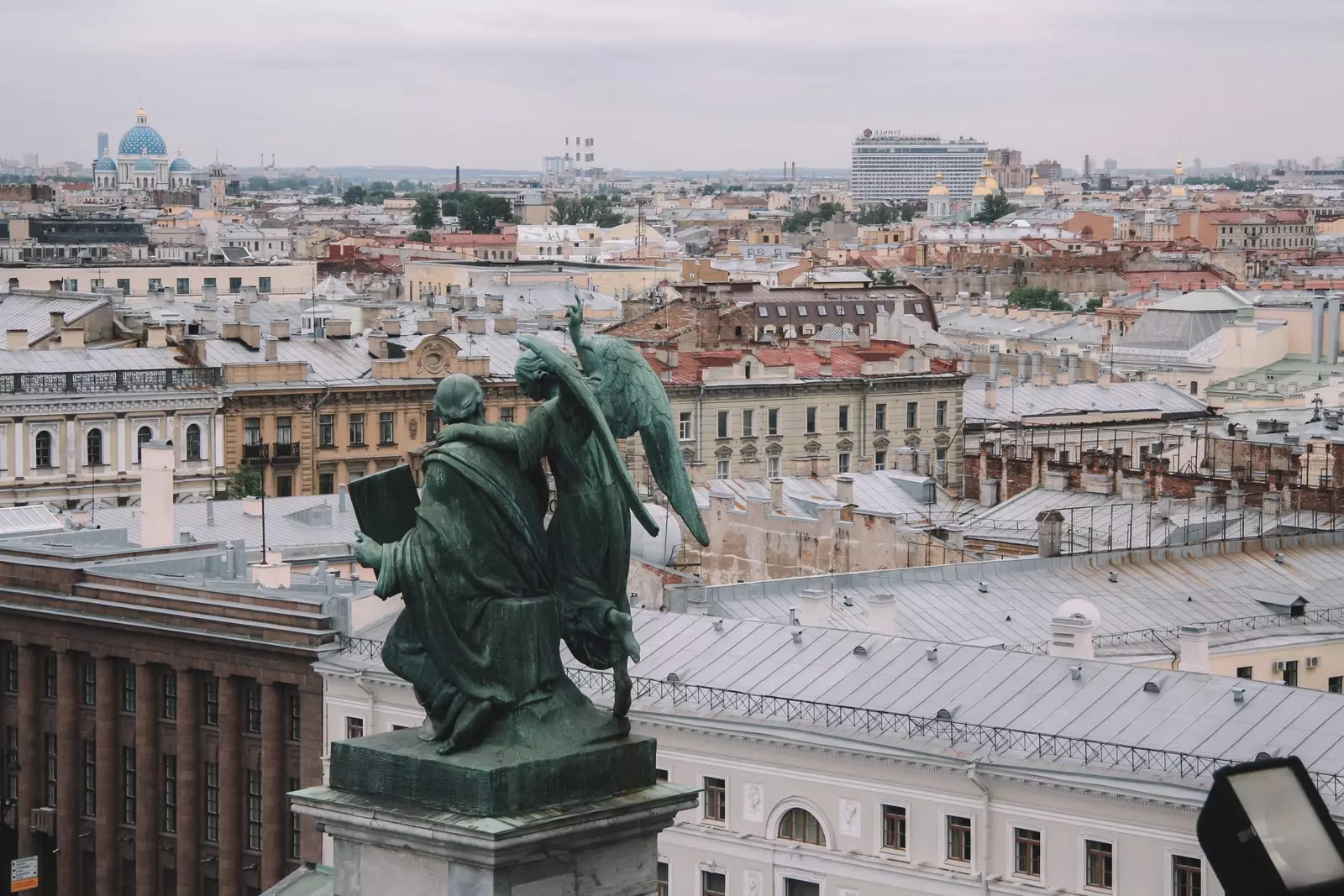
The Apostle Matthew on the roof of Saint Isaac's Cathedral in Saint Petersburg
the tower of Admiralty . The three most famous streets of the city emerge from its base. And from its peak, crowned by a small golden ship-shaped weather vane, emerges one of the least verifiable and most widespread stories of Russia. Less than three centuries ago (longer ago, the city did not exist), a craftsman came to St. Petersburg to offer his services to the Tsar.
The Admiralty weather vane had been burned by lightning and the capital of the Empire needed to recover one of its most subtle but recognizable symbols. The restoration was beyond reproach and, as a sign of recognition, the Tsar spared no reward for him. What did the craftsman want? living embodiment of the Dostoyevsky's heroes , asked for an infinite open bar in bars from the city.
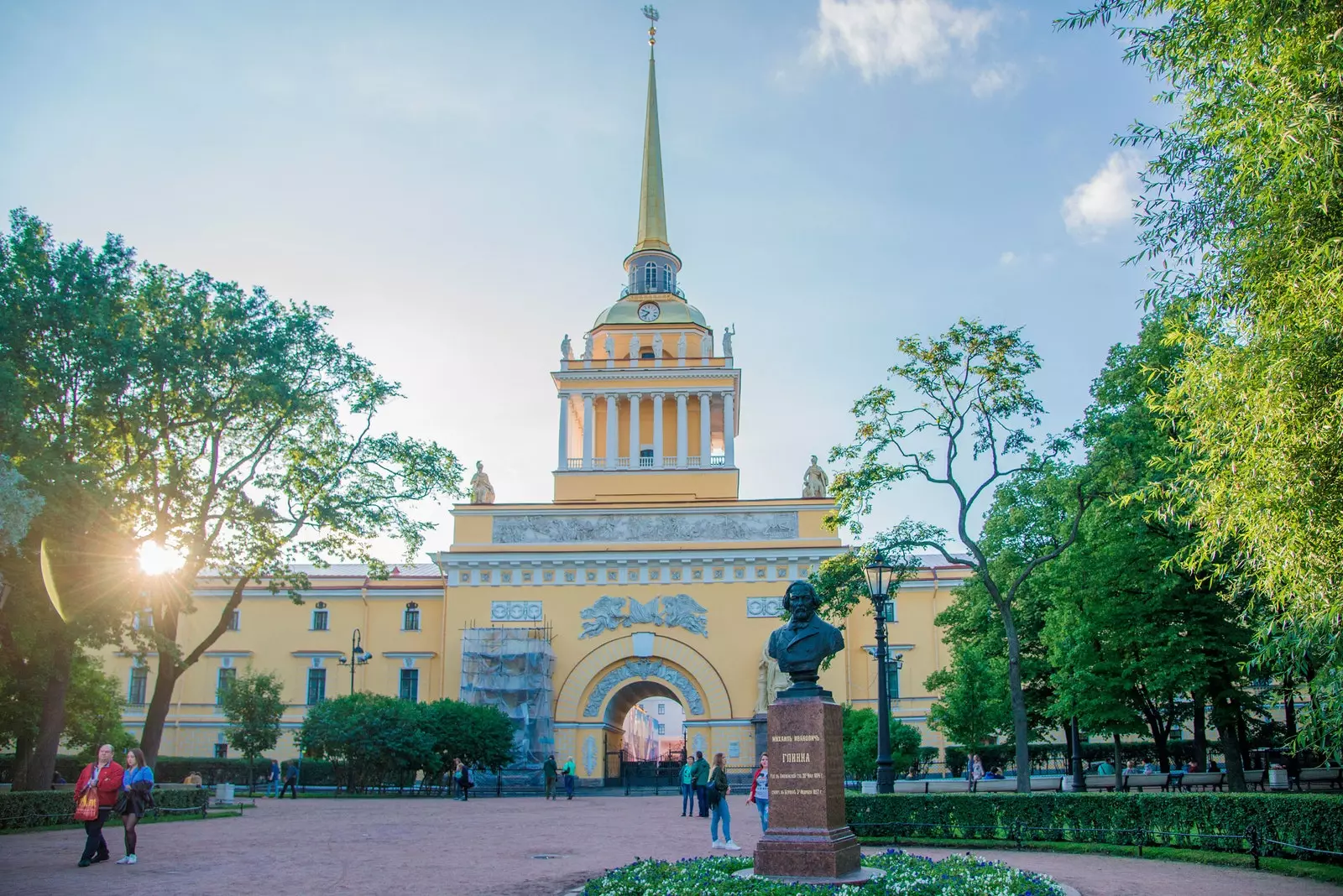
The Admiralty tower in Saint Petersburg
The Tsar issued a document in which the imperial seal guaranteed that no innkeeper would deny a single drop of alcohol to that stranger, now exalted. The next thing that History (and its protagonist) remembers is the craftsman asleep near some canal, without the certificate that assured him of perpetual style.
The credit he enjoyed for the restoration of the weather vane allowed him a second audience with the Tsar and this one, to avoid a third, tattooed the imperial seal on the neck of our hungover hero. He would no longer lose his pay and when entering each tavern he would only have to undo his scarf to show the badge that opened the doors of Bacchus's branches for him. With pride and a blow of the index finger on the aorta, the craftsman at the same time chronicled the stereotype of the Russian alcoholic and a gesture with which in this country (just like in Spain the elbow is raised), one confesses that he has drunk or that he wants to drink until he wakes up in a Petersburg canal.
What happened to the craftsman is unknown that no fan of fine St. Petersburg spirits cares to remember. To distract himself, he has nothing but turn 90 degrees from the Admiralty and gaze at the dome of Saint Isaac's Cathedral . Even the most sober of the place have its gold cover as the largest in the world. Under it, a clock. And after the clock, in turn, a history of excesses, cruelty and sensitivity.
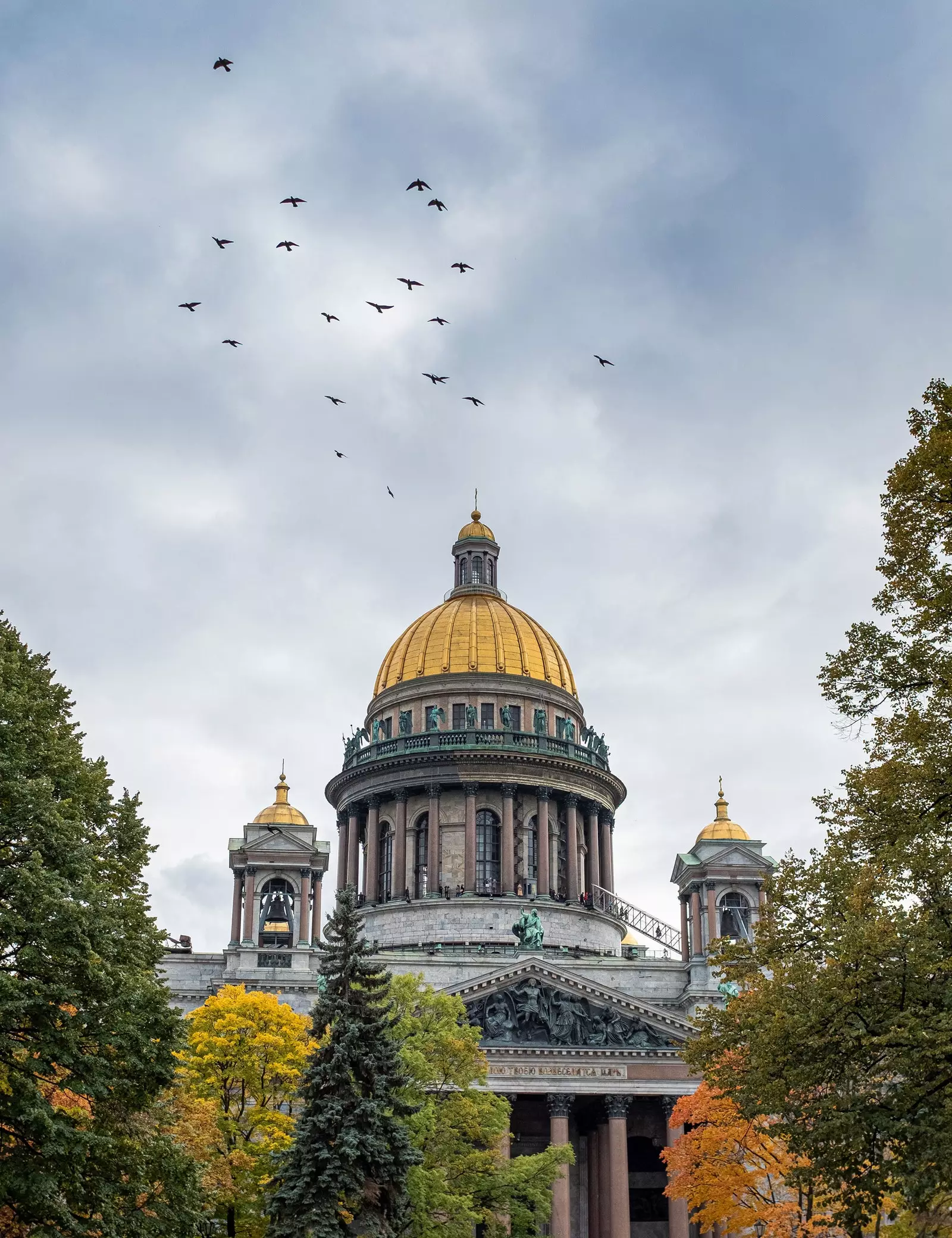
Saint Isaac's Cathedral in Saint Petersburg
The protagonist? another craftsman , in this case a foreigner, that he was called to the new and incipient Baltic capital. His role for him? Making sure Petersburgers weren't late, and that they arrived in style. How? building a clock whose beauty and precision surpassed those of the iconic symbols of Prague or Vienna. The reward? Eternal recognition. And the price? His life, which would be taken from him as soon as his work was finished. He accepted, but as a good master of time, he delayed his work for 40 years , in which he was treated like a tsar.
Whether true or not, they are two of the anecdotes with which our guide takes advantage of hunger of tourists to reinforce his vision that in Russia one swims in vodka and there is as much admiration for art as contempt for life . We are on the rooftops of one of the most iconic buildings on two of the most famous streets in the city. if we peek on the right, we see Nevsky Prospect . Opposite, runs Rubinstein street. Y around, the roofs of the least Russian city in Russia . Above them, we see other groups of between 2 and 10 people, who listen to the same stories as us.
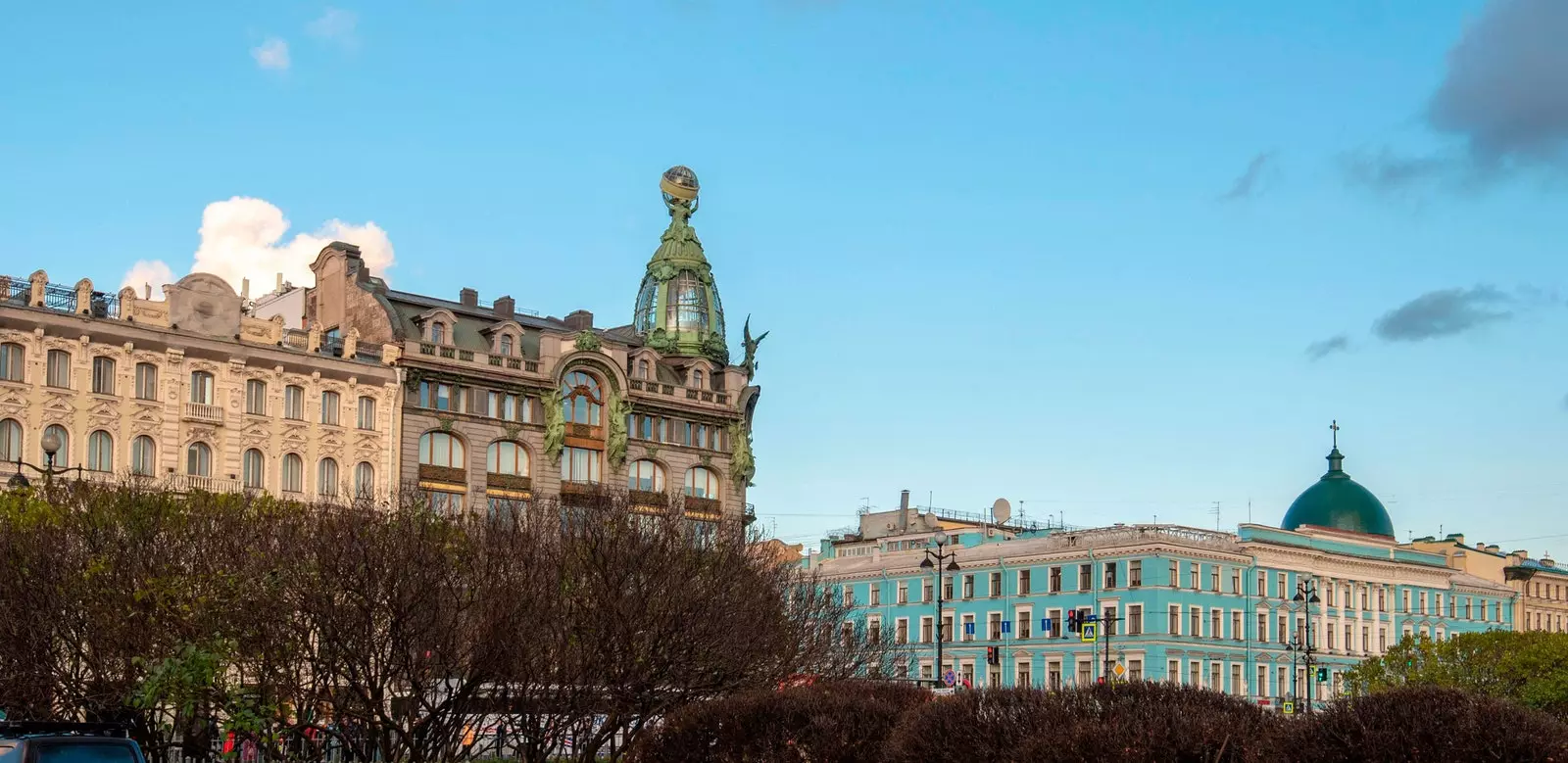
View of Nevsky Prospect in Saint Petersburg
And it is that between the cultural saturation (and alcohol, why deny it) that Saint Petersburg offers, there are many of us who are looking for a breath of fresh air with alternative excursions, like the ones that dozens of individuals of suspicious origin offer across the rooftops of the city.
Hiring through private Instagram messages and cash payments give us an idea of the secrecy of the initiative , which is no less popular for that. Teenagers and gopniks (Russian canis) accustomed to trawling the city like the craftsman with the weathervane, gain access to the few buildings that rise above the uniform Petersburg skyline.
for 20 euros , they show it to tourists totally unprepared for climbing fire ladders, jumping over ledges, or holding on to rusty wires to be able to get out impossible photos . If one also listens to his extravagant anecdotes, one can imagine true Dostoyevsky or Gogol characters giving a history lesson. And, if you manage to ignore his battered Russian, you can enjoy an enviable panorama, whose horizons are defined in 360 degrees through the profile of the buildings against the sky.
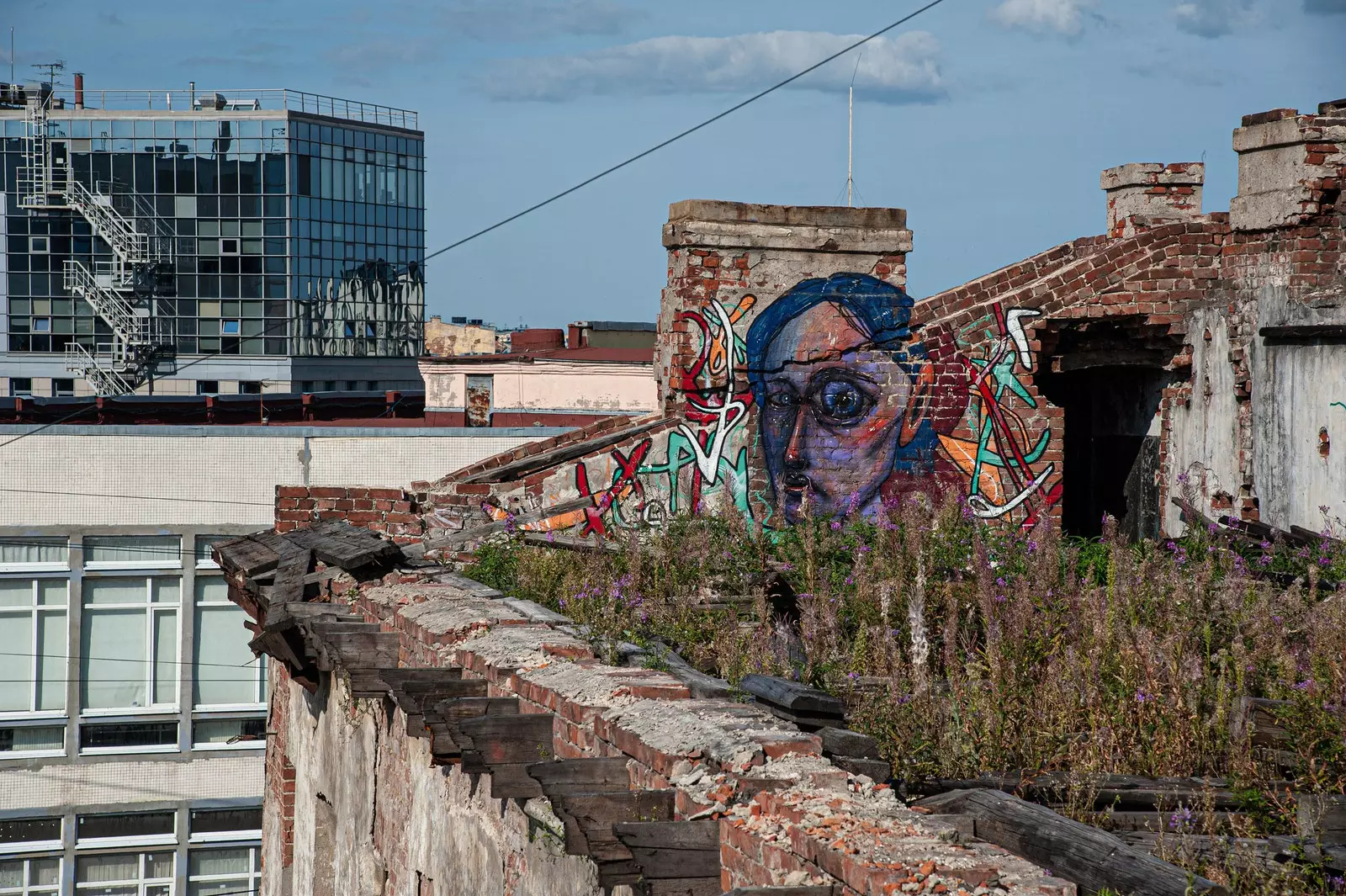
A different way to get to know St. Petersburg
In our case, after passing through an attic with an active fauna and some rooms with folded beds and hoarse radios, we we went up to one of the semi-abandoned turrets guarding the city center. From here, the women who had not gone to the front, in the Great Patriotic War (World War II), they stalked the skies to give the alarm signal as soon as a bombardment was coming. Authentic heroines (and this story is true) who exposed themselves to the artillery of enemy planes to, through a complex system of signals, warn the weakest in the area that it was better for them to take refuge if they did not want to end up like the foreign watchmaker from the beginning of this chronicle.
From other rooftops you can see more clearly the Hermitage (the quintessential museum in Russia), the coastline with the port, the network of canals or the threatening neighborhoods of Soviet construction. But from all of them, the silhouettes of megalomaniacal ailments stand out suffered by the city throughout its history. Be it the Saint Basilica Cathedral of Spilled Blood, Our Lady of Kazan, the aforementioned Admiralty and Saint Isaac's Cathedral or the 2018 World Cup Stadium . This not only would not be finished building once the World Cup was over, but it would feed the literary spirit of the city when the mayor blamed seagulls for stealing roof coverings . Something that our guide uses as an excuse to narrate an exciting plot of corruption and reveal his ties as an entrepreneur in the national tourism sector.
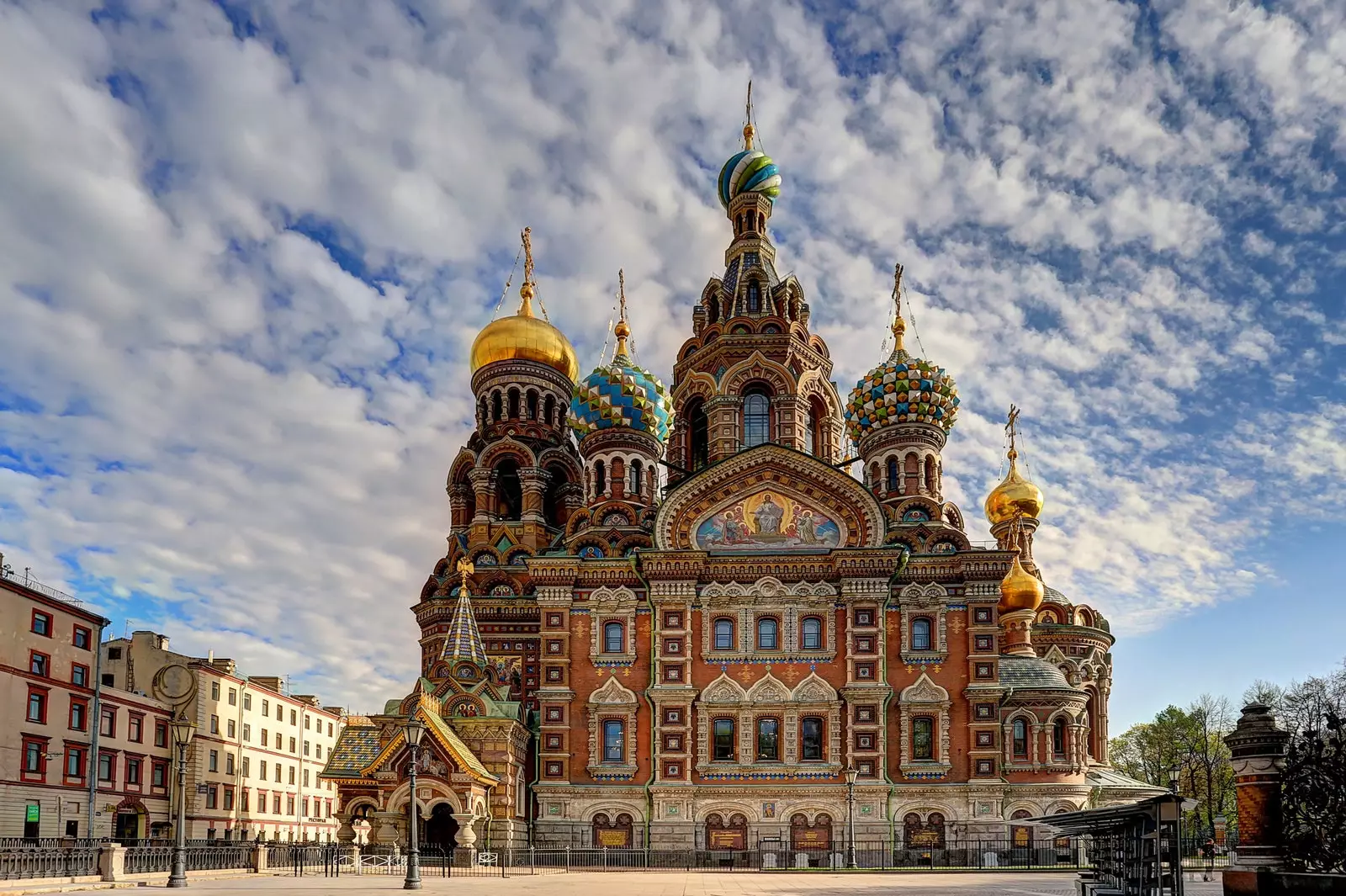
Cathedral on Spilled Blood in Saint Petersburg
And it is that, as much as one goes up to the roofs to take a break, Russia is so intense (in the most seedy and exciting sense of the word), that at no time can you stop suffering or enjoying its classics - whether literary, architectural, war or corruption. Come up and see.
